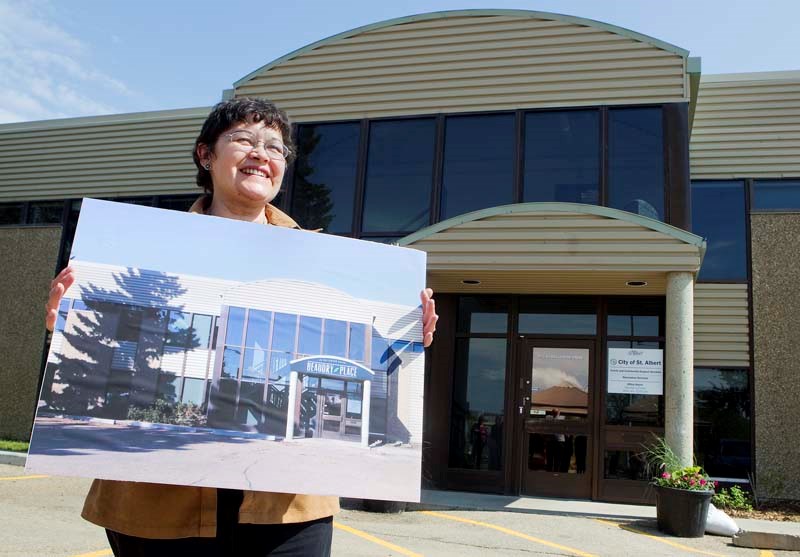There isn’t much poetic beauty in calling the city’s newest property the police services annex building, says the mayor. So on Wednesday the city gave its newest building a proper name.
Now the building on Bellerose Drive, next to Canadian Tire, will be known as Beaudry Place.
Mayor Nolan Crouse and a group of about 40 people were on hand Wednesday as the city honoured one of St. Albert’s original settlers and first municipal leaders, Joseph Beaudry, by naming the building for him.
The move comes one week after the city named the RCMP detachment Maloney Place for Daniel Maloney.
Among those guests were Beaudry’s descendants, who were touched the city decided to name the new building for their ancestor.
“It’s very exciting because just celebrating our family, realizing the hard work our family did,” said Theresa Acheson, Beaudry’s great-great- granddaughter.
Beaudry was named chef du pays or municipal leader of the mission in 1864 during a meeting between the parishes of St. Albert, Lac Ste. Anne and St. Joachim. He helped enact and enforce several of St. Albert’s first bylaws, which made him an appropriate choice when the city decided to name its newest building.
“From the very beginning he was a community leader,” Crouse said.
The city purchased the building, known locally as the MIG building, last year for roughly $5.4 million, including renovations. It was originally bought to relieve some of the cramped working space at Maloney Place. In April, the RCMP’s traffic section, drug unit, community policing unit, general investigative services (GIS) unit and criminal intelligence unit moved in.
The city also decided to free up some elbow room at St. Albert Place by moving staff from recreation services to Beaudry Place. It also moved Family and Community Support Services from a rented office space downtown to the new building.
All three departments also share the building with the St. Albert Food Bank & Community Village.
Besides being an original settler, Beaudry became someone the public could trust and who set down roots in St. Albert.
“I don’t think we can ever underestimate the history, the legacy of the leaders of that day,” said Crouse. “For some reason, St. Albert has grown to 60,000 people and for some reason, other communities have not grown.”
Acheson said much more is known about Beaudry than other St. Albert pioneers because of her mother Dorothy Chartrand, also Beaudry’s great-granddaughter. Chartrand, who turns 95 in August, quietly watched the proceedings.
“They weren’t looking for notoriety,” Acheson said. “They were just living good lives and outstanding lives.”
A plaque will be affixed to the building and an awning erected over its front door. The city will also soon choose one proposal for a piece of public art, valued at $50,000, for the building.
St. Albert's first laws
Joseph Beaudry helped create and enforce some of St. Albert's first laws. Among them:<br />• Anyone guilty of murder would be sent to Red River for trial. Everyone in the mission had to pay three shillings to cover the transport costs.<br />• The fine for catching or harnessing another person's horse without permission was one pound, 10 shillings.<br />• The fine for defaming or slandering anyone was 10 shillings and costs.<br />• Any man who committed adultery had to pay a fine of four pounds, 10 shillings, but only if the woman's husband first warned him to stay away.<br />• Driving a sleigh without bells on a public road drew a fine of three shillings.<br />• A person who did not own any mares but let his stallion run free after June 1 was liable for any damage caused.




